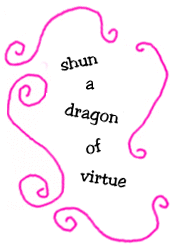 Q Dear Miss Abigail:
Q Dear Miss Abigail:
How do I know if he is “The One” for me?
Signed,
Just Curious
A Dear Curious:
Although it is easier for some to find that perfect person, all too often the situation is more complex; as Max O’Rell says in Her Royal Highness Woman, “Unfortunately for you, they are not labelled.” Never fear ~ he does offer some advice, and I do hope it will help you decide.
1901: On the Selection of Life Partners
![]() In choosing their partners for life, people should be as careful as in choosing their ancestors. To give advice in this matter, however, is a very delicate task to undertake. . . .
In choosing their partners for life, people should be as careful as in choosing their ancestors. To give advice in this matter, however, is a very delicate task to undertake. . . .
A woman should avoid accepting a man who has been particularly successful with women. At the same time, she should look for one to whom woman is not an enigma, and who is a man of the world and of strong character, so that she may feel sure that when he chose her, he said to himself: ‘I know my mind; happiness for me lies there.’ On that man she will be able to depend and lean safely.
As peace and security are the guarantees of happiness in matrimony, a man should not choose a lovely rose who will attract the attention of all the men, but look for a modest violet in some retired, shady spot. The violet is the emblem of peaceful and lasting love.
A woman should avoid marrying a man who at home is the favourite of many sisters who constantly dance attendance on him. That man is spoiled for matrimony. He will require his wife to bestow on him all the attention he received from his sisters, besides those which he has a right to expect from a wife.
I should advise women to shun a dragon of virtue like fire: she should prefer a dragoon rather. A man may be good, but he must not overdo it. He that has no wickedness is too good for this world; not even a nun could endure him. Fancy, my dear lady, a man being shocked by you! The male prig is the abomination of the earth, and should be the pet aversion of women.![]()
Source: O’Rell, Max. Her Royal Highness Woman and His Majesty Cupid. New York: The Abbey Press, 1901.
~ pp. 21, 23 ~